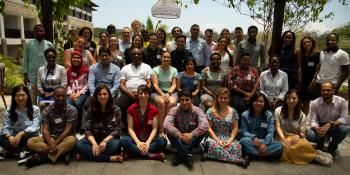Gas pooling: a sampling technique to overcome spatial heterogeneity of soil carbon dioxide and nitrous oxide fluxes

Small-scale spatial variability in soil carbon dioxide (CO2) and nitrous oxide (N2O) fluxes poses serious challenges to the experimental design, and number of gas samples needed to provide a reliable estimate of flux usually exceeds analytical capacities. We pooled gas samples –analogously to soil pooling – to overcome this challenge. Our sample pooling technique collects a composite gas sample from several chambers instead of the conventional practise of analyzing samples from chambers individually, thus reducing numbers of gas samples. The method was verified to be reasonably accurate in forest, grassland and agricultural fields over a four week measurement campaign. Pooling technique results differed by 2–8% for CO2 and by 3–4% for N2O when compared to individual chamber means. That shows pooling of gas samples across individual static chambers is an acceptable approach to integrate spatial heterogeneity.
Citation
Arias-Navarro C, Díaz-Pinés E, Kieseb R, Rosenstock TS, Rufino MC, Stern D, Neufeldt H, Verchot LV, Butterbach-Bahl K. 2013. Gas pooling: a sampling technique to overcome spatial heterogeneity of soil carbon dioxide and nitrous oxide fluxes. Soil Biology and Biochemistry 67: 20-23.
